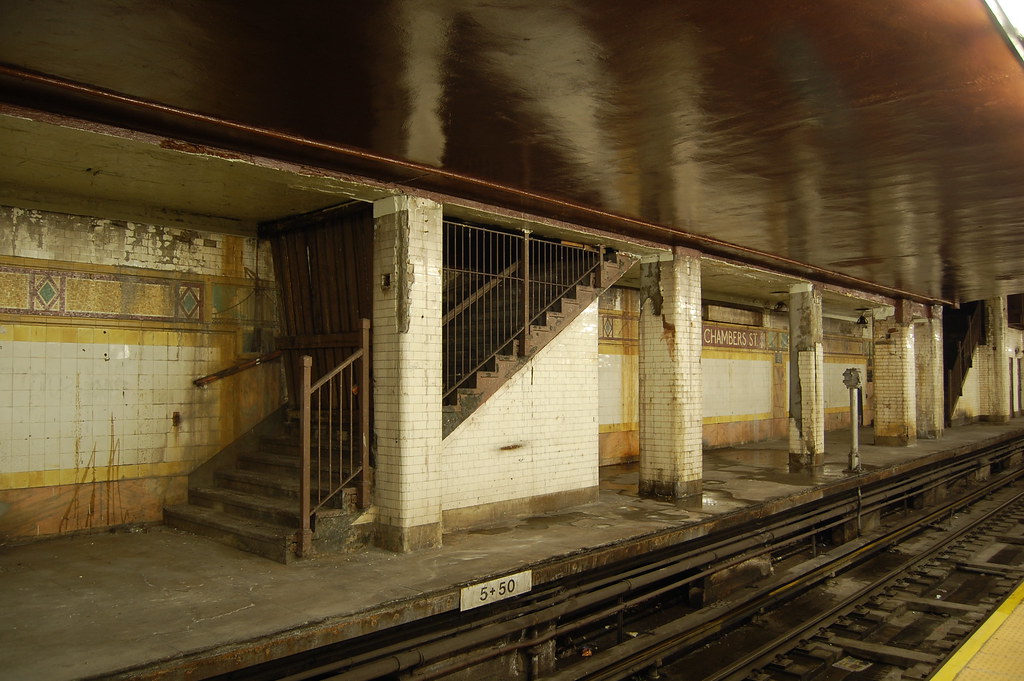Southeast Queens — the area of the city’s largest borough out beyond JFK Airport — currently sits in something of a transit dead zone. It’s served by subway lines on the north and south and has the AirTrain and LIRR tracks running through certain neighborhoods, but the rail transit options are not integrated in a way that promotes convenient or face commutes from the eastern edges of New York City into Manhattan’s Central Business District. While certain bus rapid transit/select bus service plans are on the table to address some Jamaica-area bus service improvements, rail options are rather mentioned by planners looking to improve access.
In an interesting and thorough piece at The Transport Politic, Yonah Freemark explores a few solutions to the Southeast Queens problem. He first proposes a city-subsidized fare for Long Island Rail Road that would keep intra-city travel costs the same as a MetroCard swipe. Doing so would allow for faster, better and cheaper commutes for residents in the Queens neighborhoods such as Rosedale and Queens Village that are serviced by LIRR but not New York City Transit. He then proposes a few additional stops in southeast Queens and urges a new Jamaica-to-Howard Beach AirTrain line that would serve as a connector between the A and E/J/Z with stops at Liberty Ave. and Linden and Archer Blvds.
Freemark’s plan is an interesting one in that it uses existing infrastructure and would require relatively low-cost investments by the city, state and MTA. For an area of New York City far from the job hubs of downtown Manhattan and long underserved by transit, implementing any aspect of this plan would go along way toward encouraging transit use in a car-heavy area of the city. [The Transport Politic]

 With the winter games unfolding in Vancouver this weekend, I keep thinking about how, had the Mayor’s bid in 2005 to secure the Summer Olympics for New York City been successful, the next great gathering of international athletes would have been ours. And then I start thinking about how the 7 line project — one now destined to serve residents of a real estate complex not yet built or even paid for — got its start in Bloomberg’s desires to see the Olympics come to New York. It was that same desire and the subsequent loss of the games to London that has led to the downfall of the station at 41st and 10th Ave.
With the winter games unfolding in Vancouver this weekend, I keep thinking about how, had the Mayor’s bid in 2005 to secure the Summer Olympics for New York City been successful, the next great gathering of international athletes would have been ours. And then I start thinking about how the 7 line project — one now destined to serve residents of a real estate complex not yet built or even paid for — got its start in Bloomberg’s desires to see the Olympics come to New York. It was that same desire and the subsequent loss of the games to London that has led to the downfall of the station at 41st and 10th Ave.
 Following this morning’s meeting, Jay Walder spent a few minutes talking to reporters about the upcoming layoffs soon to impact the MTA. The personnel reductions will go into effect in 60 days, and the 1000 jobs on the chopping block will be the first in what could be a wave of layoffs this year.
Following this morning’s meeting, Jay Walder spent a few minutes talking to reporters about the upcoming layoffs soon to impact the MTA. The personnel reductions will go into effect in 60 days, and the 1000 jobs on the chopping block will be the first in what could be a wave of layoffs this year.  Later this morning, at 9:30 a.m., the MTA Board will convene for its monthly meeting. Unlike previous months’ gatherings, February’s will be a fairly routine one. The service cut proposals are being digested, and while MTA CEO and Chairman Jay Walder will field some questions on yesterday’s
Later this morning, at 9:30 a.m., the MTA Board will convene for its monthly meeting. Unlike previous months’ gatherings, February’s will be a fairly routine one. The service cut proposals are being digested, and while MTA CEO and Chairman Jay Walder will field some questions on yesterday’s 
 As the MTA looks to close an ever-widening budget gap, the agency will have to trim from every department, and everyone involved in the daily operations of our public transportation network will feel the pain. From those of us rely on the subways and buses to get to and from the office and school to those of us who work for the MTA, we all will pay the price. We’ve heard a lot about the authority’s plans to
As the MTA looks to close an ever-widening budget gap, the agency will have to trim from every department, and everyone involved in the daily operations of our public transportation network will feel the pain. From those of us rely on the subways and buses to get to and from the office and school to those of us who work for the MTA, we all will pay the price. We’ve heard a lot about the authority’s plans to